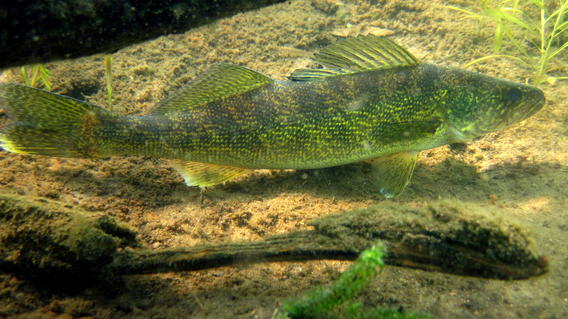
Stocking to supplement and maintain recreational fisheries translates into low natural recruitment and increased demand due to climate change.
Challenge: Demand could exceed supply due to climate change, and effects on production & recruitment are poorly understood.
Principal Investigator(s):
- Daniel Isermann (USGS-Wisconsin Cooperative Fishery Research Unit)
Cooperator/Partner(s):
- Seth Herbst
- Scott Gangl
- Gretchen Hansen
- John Hoxmeier
- Alex Latzka
- Dave Lucchesi
- Dale Logsdon
- Craig Paukert
- Zachary Lawson
- Stephanie Shaw
- Rebecca Krogman
- Keith Koupal
- Joseph Conroy
Stocking, or raising fish in hatcheries and releasing them into a body of water, is routinely used to supplement or maintain fisheries when natural populations are low or nonexistent. Demand for stocking cool and coldwater fish species that support important fisheries will likely increase as a result of climate change, but fish available for stocking are a limited resource. Consequently, climate change will likely affect supply-and-demand tradeoffs associated with stocking fish in the future, where demand for fish is likely to exceed supply.
Researchers will examine supply-and-demand tradeoffs using walleye, which represent an ideal species for this assessment because they are a native coolwater species supporting economically- and socially-important fisheries across North America, stocking is already used to support or maintain many walleye fisheries, and walleye populations have already declined due to climate change, resulting in increased demand for stocked fish. The research team will forecast what stocking success might be for individual lakes in the future, given that climate change is likely to affect many factors regulating stocking success. These projections will allow fishery biologists to compare the number of walleye needed to stock walleye fisheries in the face of climate change (i.e., demand) against the number of walleye that might be available for stocking (i.e., supply). This work will allow agencies to adapt stocking strategies to ensure that walleye fishing opportunities remain available and to ensure that agency resources are expended in a manner that is both biologically relevant and cost effective.
Read more from the CASC Project Explorer.
